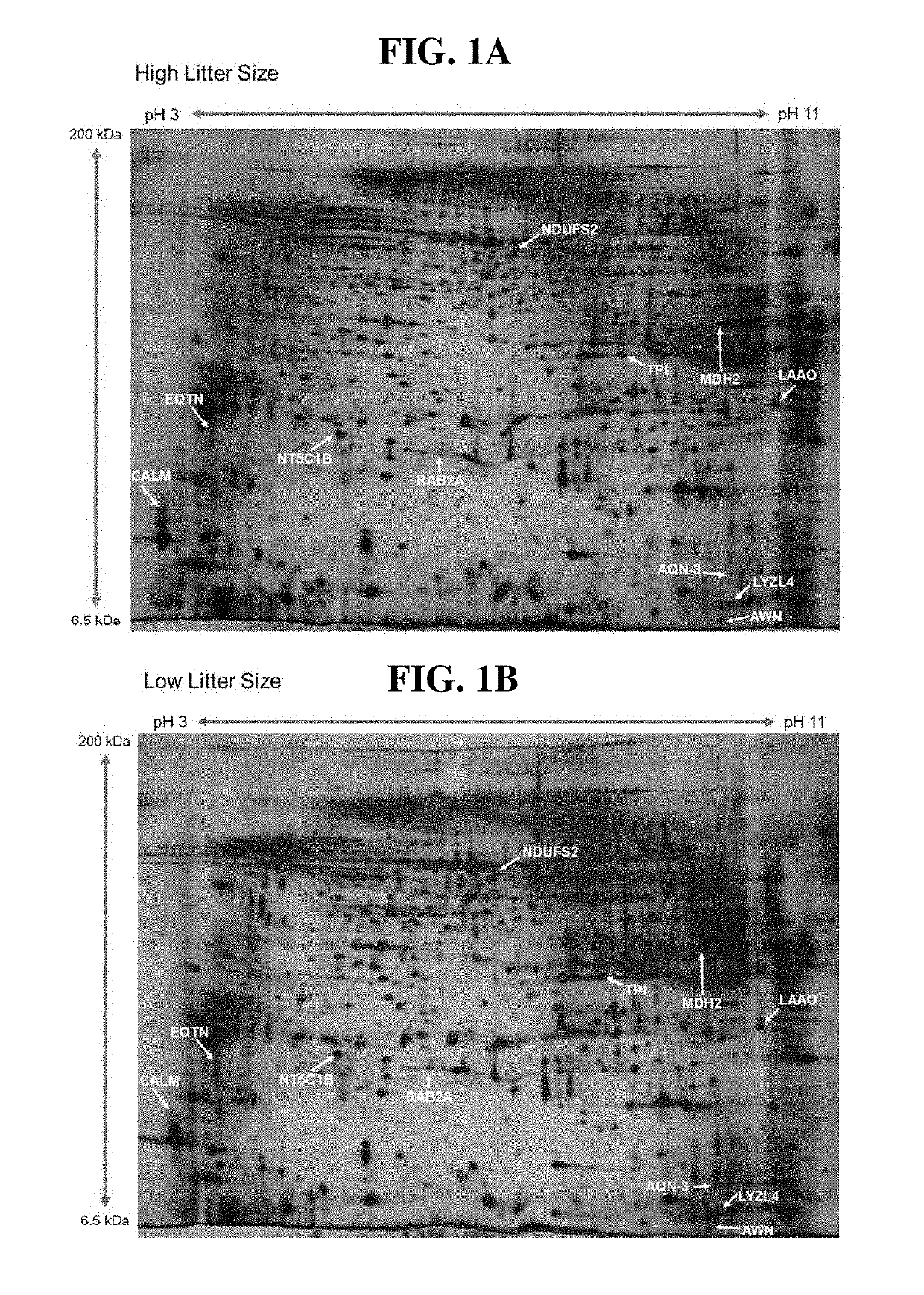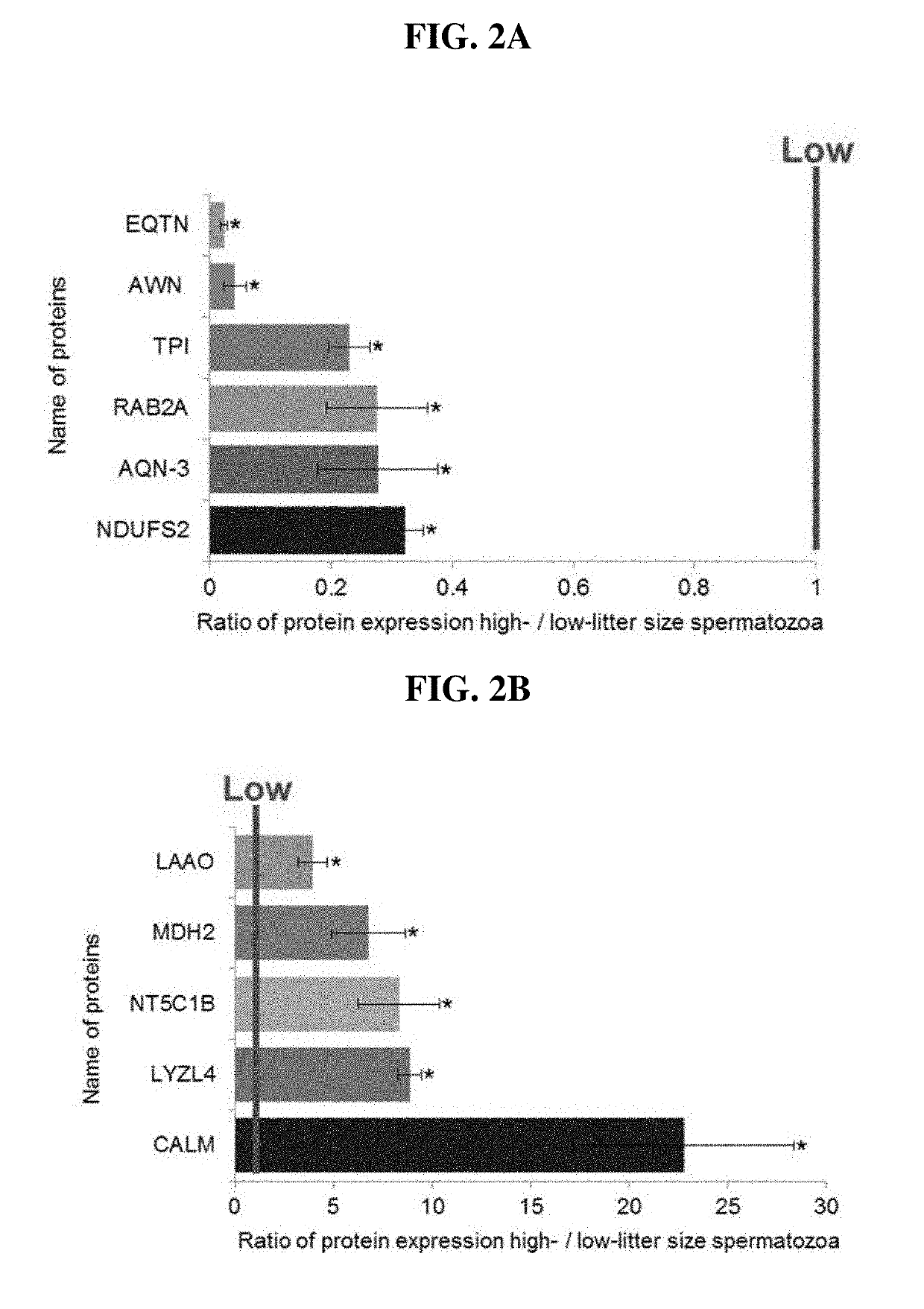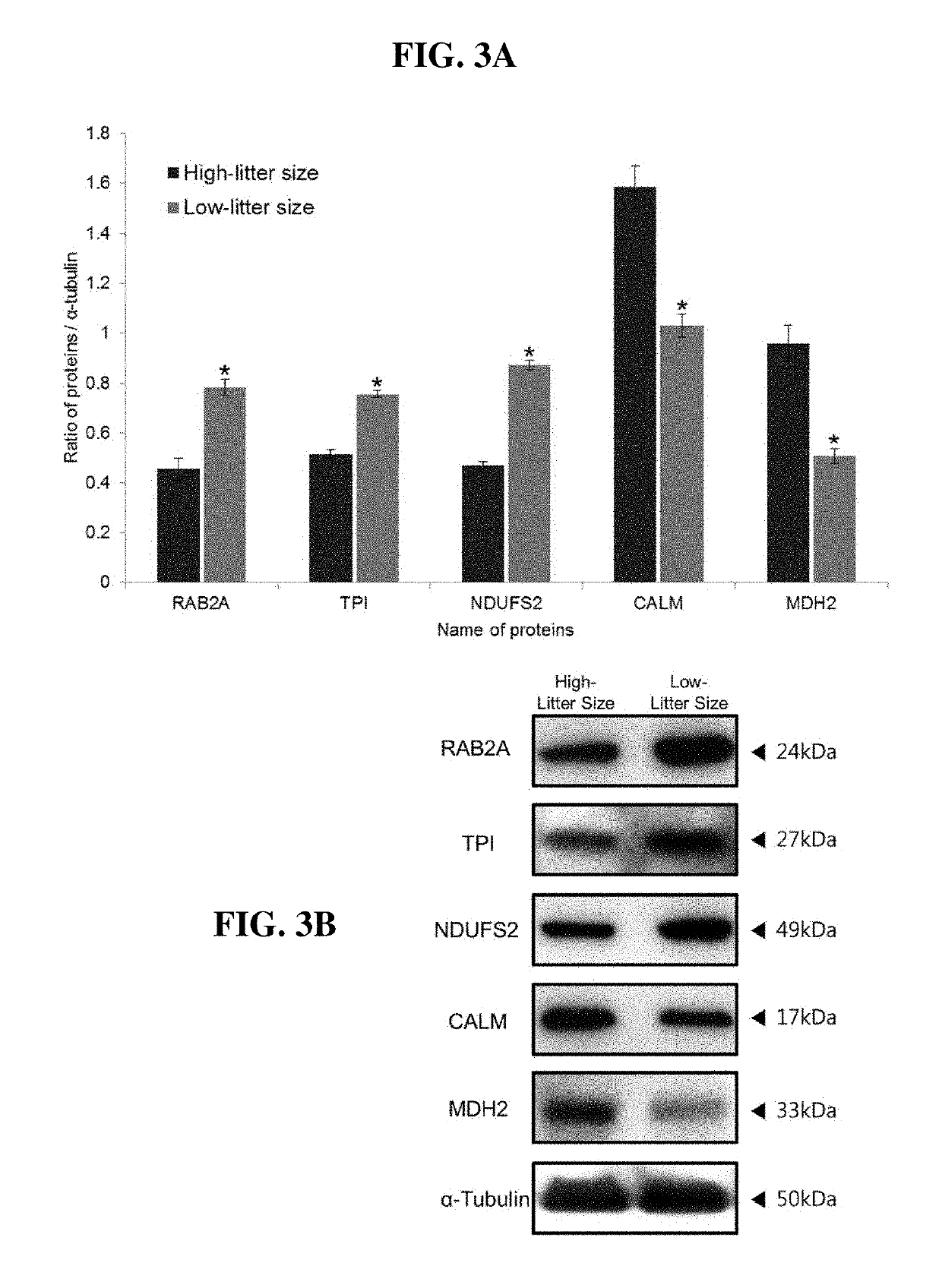Method of predicting animal litter size using protein biomarkers related with fertility, and method of predicting animal sperm quality and litter size using chlortetracycline staining
a technology of protein biomarkers and animal litter size, applied in biochemistry equipment and processes, instruments, material analysis, etc., can solve problems such as huge economic drawbacks, and achieve the effects of high sperm fertility, high litter size, and high usefulness
- Summary
- Abstract
- Description
- Claims
- Application Information
AI Technical Summary
Benefits of technology
Problems solved by technology
Method used
Image
Examples
examples
[0089]Hereinafter, the present invention will be described in further detail with reference to examples. It will be obvious to a person having ordinary skill in the art that these examples are illustrative purposes only and are not to be construed to limit or change the scope of the present invention.
I. Method of Predicting Animal Litter Size Using a Fertility-Related Protein Marker
example i-1
aration
[0090]Landrace semen samples were provided from Sunjin Co. (Danyang, Korea). Fertility field data of each male were received from the farm (total pups / total breeding). To eliminate fertility variation, parity 1 was removed, and only parity 2-8 (multiparous) fertility data was included. Nine high-litter size semen samples (12.3±0.07) and nine low-litter size semen samples (10.2±0.09) were collected. Both samples were randomly divided into three groups (n=3) for experimental replication. To rule out individual variation, each group was pooled. The pooled samples were washed at 500×g for 20 min with a discontinuous Percoll gradient (70% [v / v] and 35% [v / v]) (Sigma, USA) to remove seminal plasma and dead spermatozoa. 20 boar samples randomly selected based on fertility field data of ELISA were also washed according to the above method. All procedures were performed according to guidelines for the ethical treatment of animals, and were approved by the Institutional Animal Care and...
example i-2
ter-Assisted Sperm Analysis)
[0091]Sperm motility (%) and motion kinematics were analyzed by computer-assisted sperm analysis using a CASA system (SAIS Plus version 10.1, Medical Supply, Seoul, Korea). Specifically, 10 μL of the sperm of each group prepared in Example 1 was placed in a Makler chamber (Makler, Israel). The filled chamber was then placed on a 37° C. heated stage. Using a 10× objective in phase contrast mode, the image was relayed, digitized, and analyzed by SAIS. The movement of at least 250 sperm cells was recorded for each sample from random fields (>5). With respect to the motility setting parameters, objects with a curvilinear velocity (VCL) more than 10 μm / s were considered motile. Motility (%) and five motion kinematics parameters (i.e., curvilinear velocity (VCL), straight-line velocity (VSL), average path velocity (VAP), and mean amplitude of head lateral displacement (ALH)) were analyzed.
PUM
| Property | Measurement | Unit |
|---|---|---|
| v/v | aaaaa | aaaaa |
| v/v | aaaaa | aaaaa |
| curvilinear velocity | aaaaa | aaaaa |
Abstract
Description
Claims
Application Information
 Login to View More
Login to View More - R&D
- Intellectual Property
- Life Sciences
- Materials
- Tech Scout
- Unparalleled Data Quality
- Higher Quality Content
- 60% Fewer Hallucinations
Browse by: Latest US Patents, China's latest patents, Technical Efficacy Thesaurus, Application Domain, Technology Topic, Popular Technical Reports.
© 2025 PatSnap. All rights reserved.Legal|Privacy policy|Modern Slavery Act Transparency Statement|Sitemap|About US| Contact US: help@patsnap.com



